Standard alarms
Standard alarms can be programmed to monitor certain behaviors, events, or unwanted conditions in your electrical system.
Pickup and dropout limits define the range of typical operating conditions. If a value falls outside of the typical conditions for a specified time period and the alarm priority is set to Low or higher, an alarm is activated.
There are two types of standard alarms:
- Setpoint alarms
- Relative setpoint alarms
Setpoint alarms
Setpoint alarms have limits set to specific values and delays that define the typical operating conditions and when an alarm becomes active.
There are two types of setpoint alarms:
- Over setpoint alarms
- Under setpoint alarms
Over setpoint alarms
An over setpoint alarm is active when the source input value exceeds the pickup for a period of time defined by the pickup delay. The alarm is no longer active when the source input drops below the dropout for a period of time defined by the dropout delay.
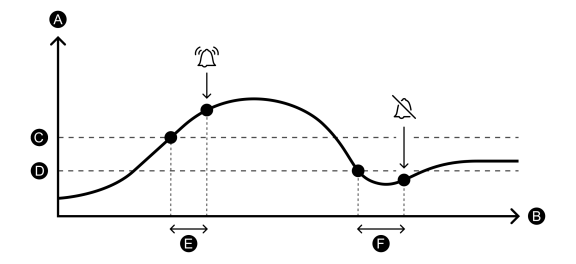
| A | Source input value |
| B | Time |
| C | Pickup |
| D | Dropout |
| E | Pickup delay |
| F | Dropout delay |
If the source input value goes above the pickup for a period of time less than the pickup delay, an alarm is not activated.
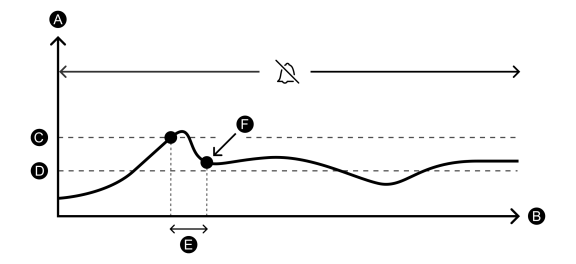
| A | Source input value |
| B | Time |
| C | Pickup |
| D | Dropout |
| E | Pickup delay |
| F | Source input value did not stay above the pickup for the full delay. An alarm is not activated. |
Under setpoint alarms
An under setpoint alarm is active when the source input value falls below the pickup for a period of time defined by the pickup delay. The alarm is no longer active when the source input exceeds the dropout for a period of time defined by the dropout delay.
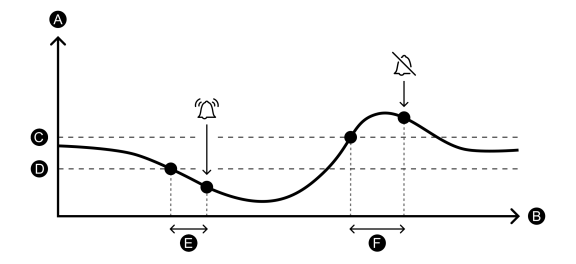
| A | Source input value |
| B | Time |
| C | Dropout |
| D | Pickup |
| E | Pickup delay |
| F | Dropout delay |
If the source input value falls below the pickup for a period of time less than the pickup delay, an alarm is not activated.
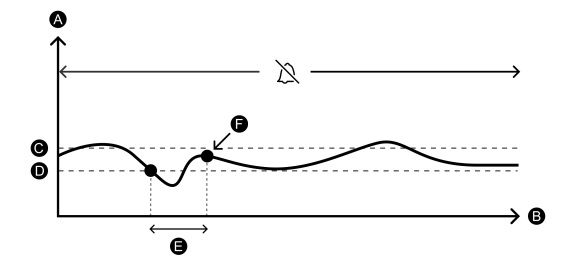
| A | Source input value |
| B | Time |
| C | Dropout |
| D | Pickup |
| E | Pickup delay |
| F | Source input value did not stay below the pickup for the full delay. An alarm is not activated. |
Relative setpoint alarms
Relative setpoint alarm limits are defined relative to a nominal value. This is useful when monitoring values that are expected to fluctuate within a range, for example, the nominal frequency of the system. You can set the limits based on a value or a percentage deviation from the nominal value. You can also specify delays that define when an alarm becomes active and inactive.
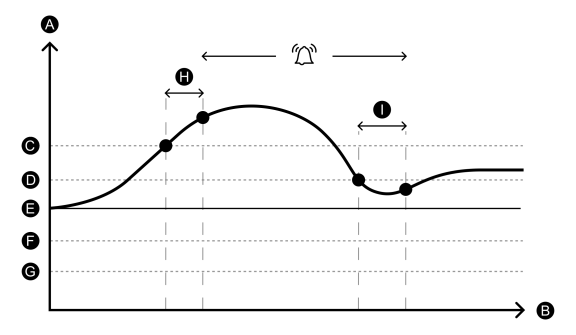
| A | Source input value |
| B | Time |
| C | Over pickup |
| D | Over dropout |
| E | Nominal value |
| F | Under dropout |
| G | Under pickup |
| H | Pickup delay |
| I | Dropout delay |